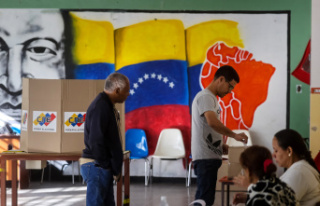After the abrupt closure of the truce that allowed the release of 113 Israelis and foreigners kidnapped by Hamas and Islamic Jihad and that made possible the arrival of more humanitarian aid and a certain calm to the Gaza Strip, another window has opened this weekend which is framed by attacks and a ground incursion into the southern city of Khan Yunis.
If there was an agreement for the delivery of the pending batch of hostages to be released, the war window could close briefly. For now, the battle zone is opening wide this time towards the South.
If in the first weeks of the war, the Tsahal focused on attacking and taking control of large areas of northern Gaza, now the objective first of the fighters and then of the soldiers is the southern capital of the Palestinian enclave.
After saying that in the last two days his forces killed many Hamas commanders and militiamen, Army Chief Herzi Halevi confirmed it this Sunday: "We fought hard and exhaustively in the north of the Gaza Strip, and now we are doing it too. In the south".
It is a very sensitive area not only because before Khan Yunis it was already the second most populous (400,000 people) after Gaza City. Today, it houses more than 1.7 million of the 2.3 million inhabitants displaced due to the massive evacuation from the North.
According to the communications director of UNRWA (UN agency for Palestinian refugees), Juliette Touma, about 958,000 sought refuge in 99 UN headquarters in southern Gaza. "People have lost everything and need everything," she warns.
Another aspect that complicates the Israeli operation is that it would be the place where many kidnapped people were taken and hidden either in houses or in tunnels.
Israel considers it a major stronghold of Hamas's armed wing, including leaders and militiamen who fled fighting in the north. Not in vain, in Yan Yunis were born the two Palestinians most wanted by the Israeli security services on the face of the earth after having planned and executed the largest attack in the history of the Jewish State (more than 1,200 dead and 240 kidnapped): the leader of Hamas in Gaza, Yahia Sinwar, and the head of the armed wing, Mohamed Deif.
The speed with which Israel intends to carry out the land incursion in the south, unlike what happened in the north, is due both to the fear that the members of the Ezedin Al Qassam Brigades will flee through tunnels towards Egypt and to the greater pressure from the US, very concerned about the number of civilian victims and displaced people. Operational plans in the south will take into account the limitations and demands presented by Washington, they say in the Cabinet. That is, be more selective to minimize civilian casualties in such a densely populated area.
Israel uses a new tactic in which it calls for an evacuation limited by perimeters. Thus, the Army has sent messages to residents of six neighborhoods of Khan Yunis. According to Palestinian sources, Israeli tanks were already seen this weekend in the Deir Al Balah area, north of Khan Younis. The militias indicated that there was fighting and claimed responsibility for firing projectiles at Israel.
According to the Hamas-controlled Gaza Health Ministry, more than 15,500 Palestinians have died in Israeli bombings and fighting since 7/0.
After announcing the death of the head of Hamas' Shejaiya Battalion, Wissam Farhat, and other militants, Israeli military spokesman in Arabic, Avichay Adraee, threatened 11 commanders, attaching their photos and names: "This is a final warning, you are all in "The Defense Forces will operate forcefully to destroy Hamas's infrastructure. You have two options: surrender and lay down your arms or a fate similar to that of the commanders who were eliminated."
Israel has also suffered casualties among its top commanders. Specifically, four colonels. As commander of the southern Brigade of the Gaza Division, Asaf Hamami arrived early on 'Black Saturday' at Kibbutz Nirim in the face of the jihadist attack by the Nukba Unit. Hamami killed militiamen and saved numerous inhabitants, but was shot along with two soldiers. His body was taken to Gaza. The attackers carried his photo to catch him dead or alive.
The expectations to achieve a ceasefire exist but are minimal. Israel demands the release of 15 women and two children in captivity as established in the agreement for one more day of truce. Hamas replies that it does not have them and accuses Israel of wanting to resume "aggressions" by all means to end its armed and control capabilities.
The fundamentalist group would like a broader agreement that includes other categories of hostages - starting with the elderly in exchange for veteran Palestinian prisoners - that would allow more days of ceasefire.
Where the fire has increased has been in the north. Israel attacked Hezbollah targets in response to the Lebanese group's missiles resumed after the collapse of the Gaza truce.












